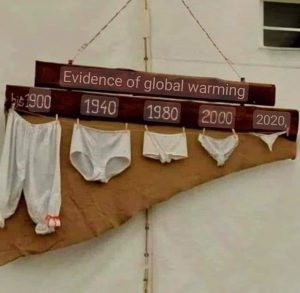Not sure What Are The Evidence Of Global Warming? Well, In recent years, the undeniable reality of global warming has become a subject of concern for individuals, communities, and nations alike.
The evidence supporting this phenomenon is both compelling and alarming.
In this article, we will delve into five convincing pieces of evidence that shed light on the escalating crisis of global warming.
Related: Do Greenhouses Work In Cold Climates?
What Are The Evidence Of Global Warming? Find Top 5
1. Rising Temperatures: A Clear Indicator
The primary evidence supporting global warming is the steady increase in average global temperatures over the past century. Meteorological data consistently reveal a rise in temperature, painting a vivid picture of a warming planet.
This rise is not confined to specific regions; it is a global trend that demands urgent attention.
2. Melting Polar Ice Caps: A Visual Consequence
A compelling visual representation of global warming is the rapid melting of polar ice caps. Satellite imagery and scientific studies vividly illustrate the alarming rate at which these vast ice masses are shrinking.
The consequences of this phenomenon are far-reaching, affecting sea levels and posing a significant threat to coastal areas.
3. Disturbed Weather Patterns: Unraveling the Climate Tapestry
Global warming disrupts established weather patterns, leading to an increase in extreme weather events. From more frequent and intense hurricanes to prolonged droughts and devastating floods, the disturbance in weather patterns serves as a poignant reminder of the Earth’s changing climate.
The evidence is not only seen in statistics but felt in the lived experiences of communities worldwide.
4. Ocean Acidification: The Silent Threat Below
While much attention is given to the warming atmosphere, an equally critical consequence of global warming is ocean acidification. As temperatures rise, so does the acidity of the oceans.
This has dire implications for marine life, particularly coral reefs and shellfish, which struggle to adapt to these changing conditions. The interconnectedness of ecosystems highlights the urgency of addressing global warming.
5. Species Migration: Adapting to a New World
Observing the migration patterns of various species provides another layer of evidence for global warming. As temperatures shift and ecosystems transform, many plants and animals are forced to migrate to more suitable habitats.
This migration is not a simple relocation but an adaptive response to the changing environmental conditions, underscoring the profound impact of global warming on biodiversity.
Conclusion
In conclusion, the evidence supporting global warming is not a collection of isolated incidents but a cohesive narrative of a planet in distress.
From rising temperatures and melting ice caps to disturbed weather patterns, ocean acidification, and species migration, the signs are unmistakable. It is imperative that individuals, communities, and policymakers recognize the urgency of addressing this crisis and work collectively towards sustainable solutions.
Recent Posts
Platinum credit cards in the UK are designed for people who want premium benefits, flexibility, and financial power in one product. They typically combine rewards, travel protection, lifestyle perks,...
The Gold Card is designed to offer a premium pathway to residency, mobility, and economic opportunity through verified financial contribution. It represents a shift toward value-based access rather...